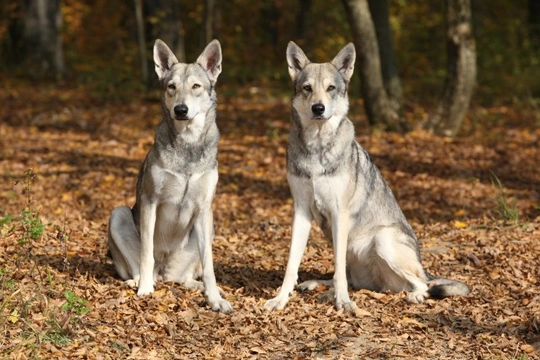
Pituitary Dwarfism Syndrome in Dogs
Pituitary dwarfism is a hereditary health condition that can affect several different breeds of dog, including the Saarloos wolfdog, Czech wolfdog, and German shepherd.
The condition occurs due to deficiencies in the pituitary gland, which controls the amount of growth hormone produced as well as a whole range of other important things. This leads to a stunted growth rate and a much slower progression of growth than is normal and healthy.
Affected pups usually appear totally normal when born, but by the time the litter reaches around eight weeks old, as the healthy pups in the litter continue to grow and develop normally, affected pups will grow at a much slower rate. Pituitary dwarfism also causes a range of other issues as well as stunted growth, including causing the coat to fail to grow guard hairs and a normal adult coat, and slow and progressive hair loss across most of the body.
Additionally, whilst healthy pups lose their baby teeth to grow in their adult set, affected pups will retain their baby teeth and not grow adult teeth, or will only develop their adult teeth much later than normal.
Whilst dogs are usually fully grown physically by the age of one year old, full growth can take up to four years in affected pups, as the long bones of the limbs take so long to close and fuse. Pituitary dwarfism also affects reproductive function, and male dogs often have very small genitalia and are often infertile, whilst females will have irregular or missing heat cycles.
Ultimately, pituitary dwarfism has a wide range of negative effects on the health and development of the dog, and also, greatly shortens their lifespans.
Because pituitary dwarfism is considered to pose a significant threat to the wider health and wellness of the Saarloos wolfdog breed as a whole, The Kennel Club in association with the British Veterinary Association strongly advise all Saarloos breeders to have their dogs DNA tested for their status prior to breeding, in order to reduce instances of the condition within the breed and ensure that only healthy dogs are used as part of breeding programmes.
In this article, we will look at pituitary dwarfism in the Saarloos wolfdog in more detail, including how the heredity of the condition works, and how to get your own dog tested. Read on to learn more.
More about pituitary dwarfism
Hereditary pituitary dwarfism cannot be reversed or cured, and generally dogs born with the condition will be suffering greatly by the time they reach three to five years of age. By this stage, such dogs will look rather sick, often being underweight and largely bald, and they are also likely to be mentally deficient and unable to lead a normal life.
This means that affected dogs rarely live past five years of age, and are often euthanized before this point if their quality of life is not adequate.
How does the heredity of the condition work?
Hereditary pituitary dwarfism is passed from dog to dog by means of autosomal recessive heredity, which means that the status of both of the parent dogs combined is what determines the status of their litter.
Dogs are designated as being either clear, carriers or affected, with carriers being healthy themselves but still able to potentially pass the condition on to their offspring. The method of heredity can be explained as followed, which allows breeders to gain a realistic understanding of the results of any mating match based on the parent dogs’ status:
- Two clear dogs will have a clear litter.
- Two affected dogs will have an affected litter.
- Two carriers will produce a mixed litter of 50% carriers, 25% clear and 25% affected.
- A clear dog and an affected dog will produce a litter of carriers.
- A clear dog and a carrier will produce 50% clear and 50% carriers.
- A carrier and an affected dog will produce 50% carriers and 50% affected.
Because pituitary dwarfism in dogs causes deviations from the norm in terms of the dog’s physical appearance, and also affects their reproductive functions, the successful mating of an affected dog with any other dog is highly unlikely. However, carrier status breeding can be a risk too, unless the status of both dogs is determined in order to ensure a healthy litter.
How to get your dog tested
Hereditary dwarfism status can be determined by means of a simple DNA test, and to get your dog tested you will just need to ask your vet to take a DNA sample from your dog, in the form of a blood sample or buccal swab.
Then you need to send it off to one of The Kennel Club’s approved laboratories (along with the appropriate fee) for testing, and the results are then returned to you.



